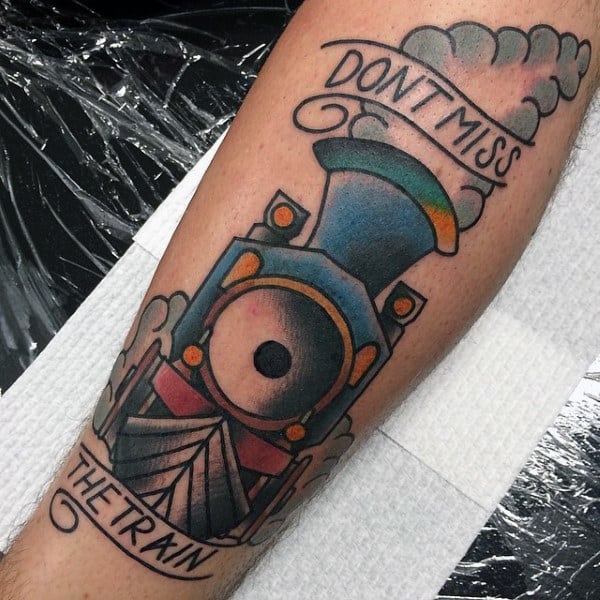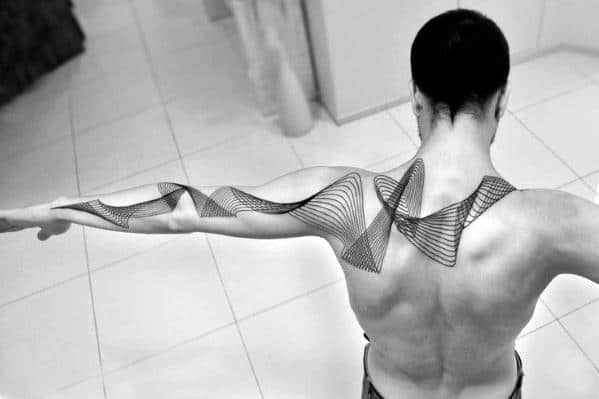The Top 121+ Best Japanese Tattoos in 2021
22. Japanese Skull Tattoos
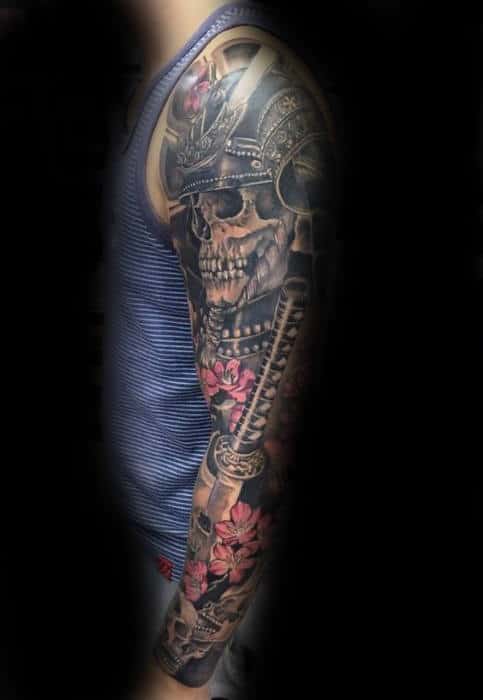
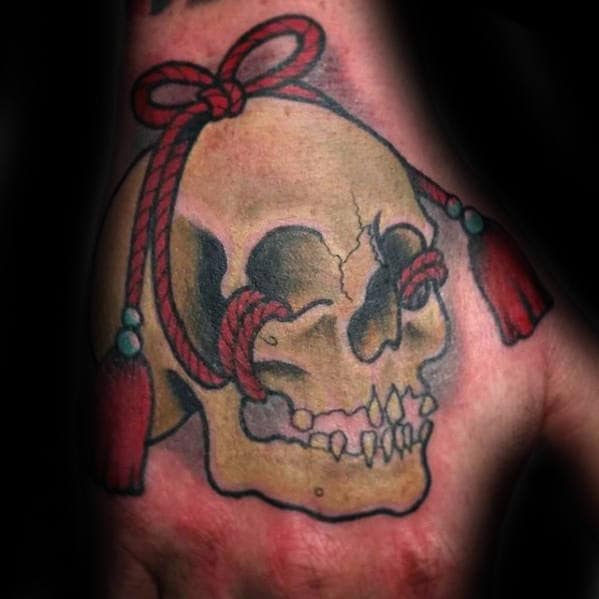
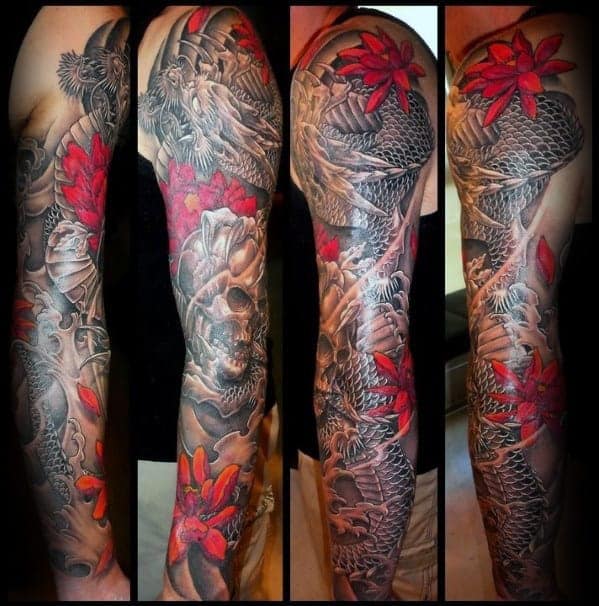
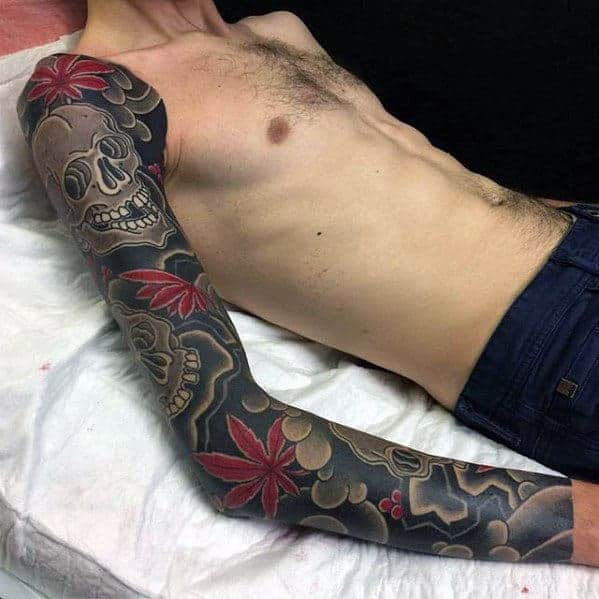
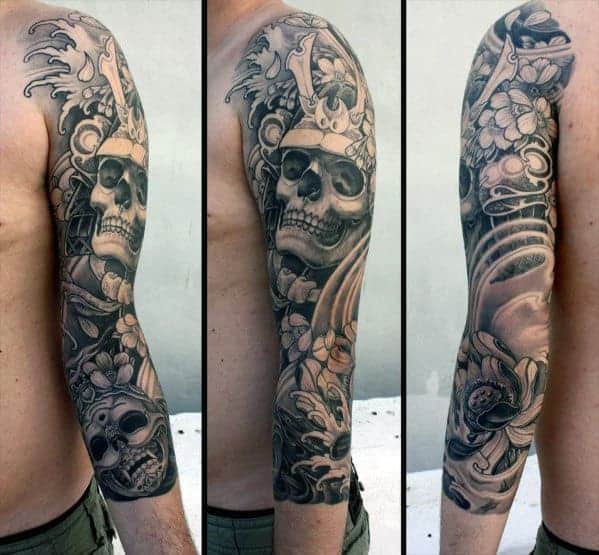
Skulls have famously been used to represent a huge spectrum of themes revolving around death, growth, and life itself. Japanese skull tattoos are unique in that they are respected and revered as a form of positive remembrance for deceased relatives and ancestors.
In Japanese culture, skull tattoos are seen as a way to honor the greatest progression man can experience. Death is revered in Japanese culture, and that symbolism has spread throughout the world of tattoos.
23. Raijin Tattoos
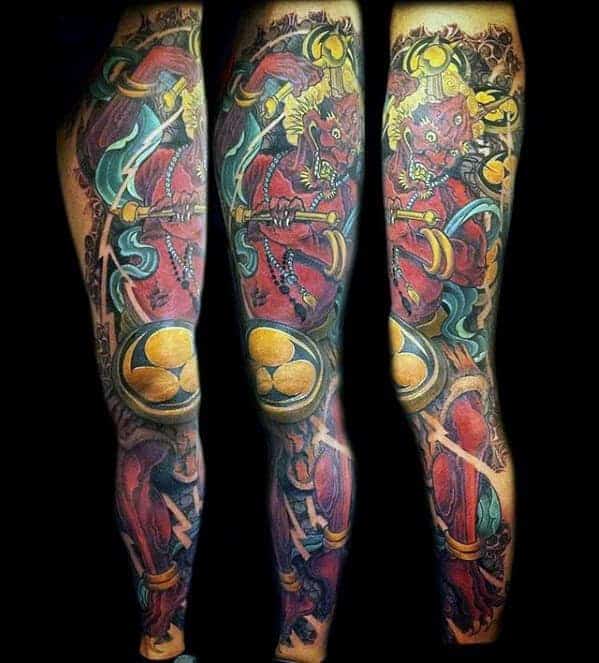
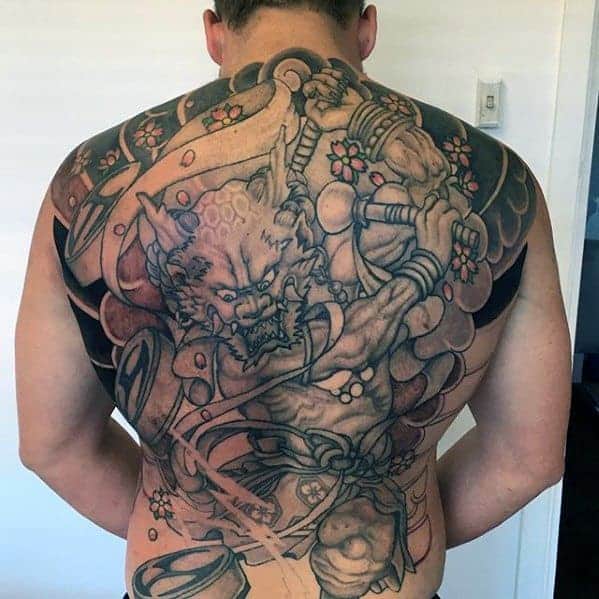

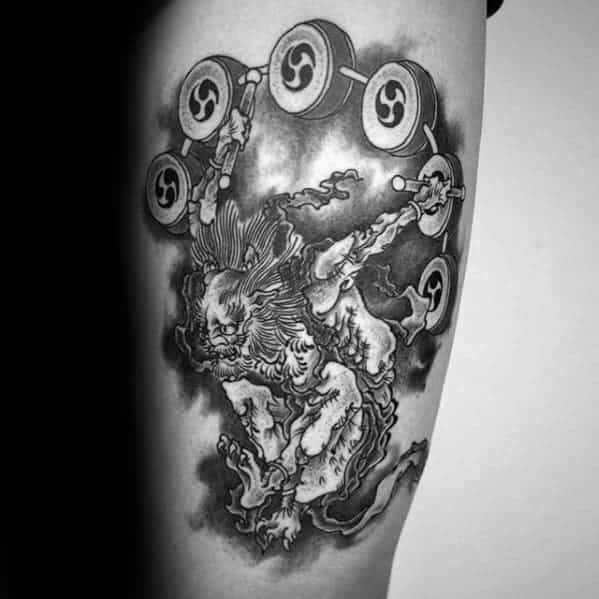
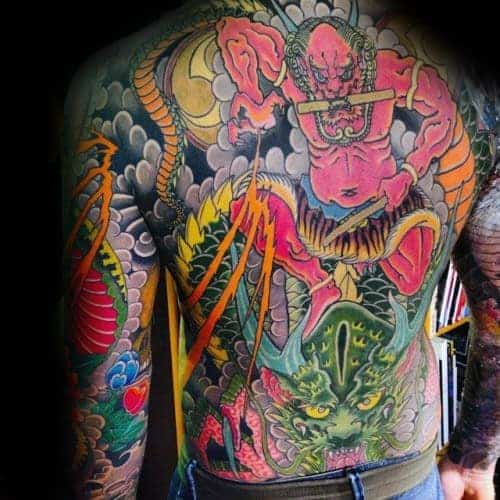
As the god of lightning, thunder and storms in the Shinto religion and in Japanese mythology, Raijin is a fearsome god. His formidable appearance and power is what makes him the perfect tattoos for those who have a deep respect for the Shinto philosophy.
Raijin was formed shortly after the creation of Japan by Izanami and Izanagi. He is said to have a drum, which he uses in order to make thunder during storms. During these storms, folk legends say that Raijin will eat children’s navels and take them away, lest they keep themselves covered in the presence of this terrifying god.
24. Japanese Frog Tattoos
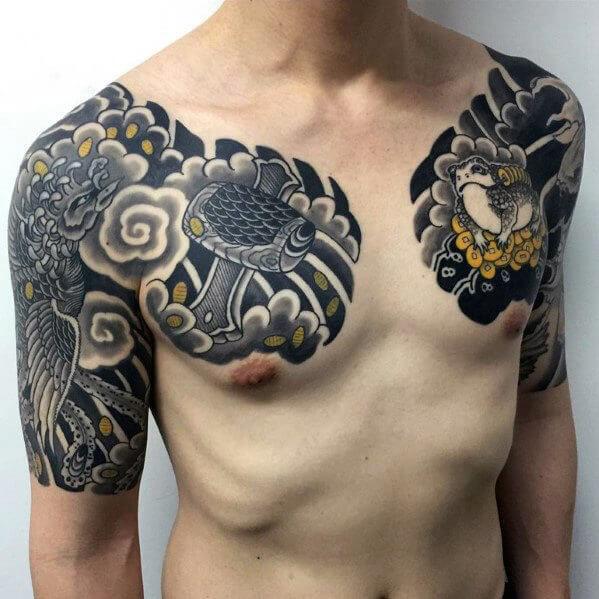
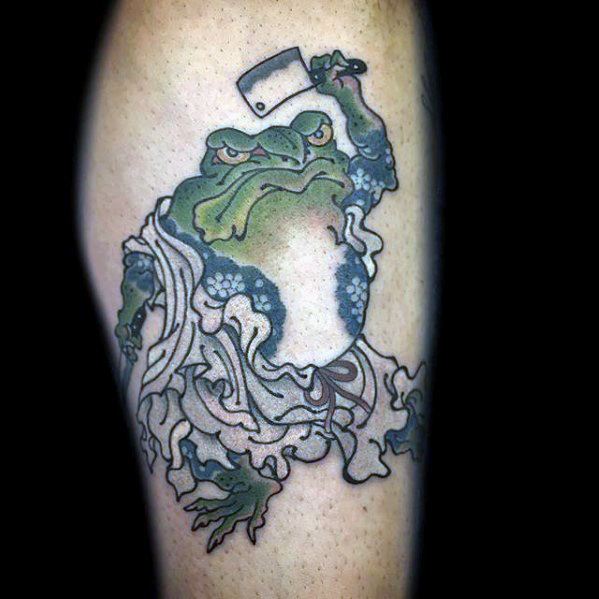
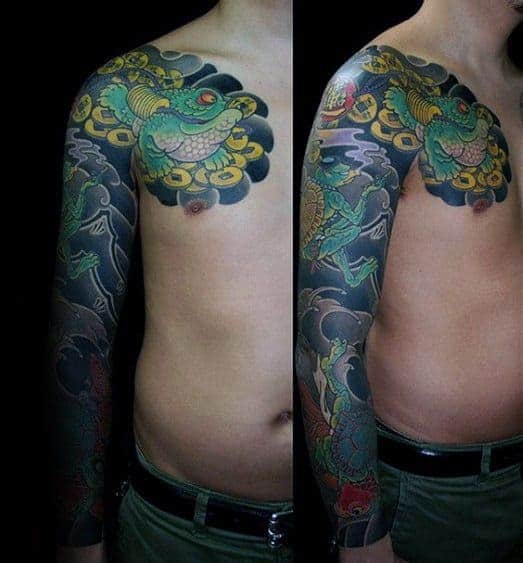


The frog holds a prestigious place in Japanese culture, holding infinite powers of prosperity, luck, and lifelong abundance. The Japanese frog is heralded as the god of rainfall during the tsuyu (plum rain) season and ensurer of harvests. The frog is often a popular good luck tattoo, gift and domestic mainstay, promising many happy returns of loved ones, success, and wealth.
Japanese Tattoo Glossary
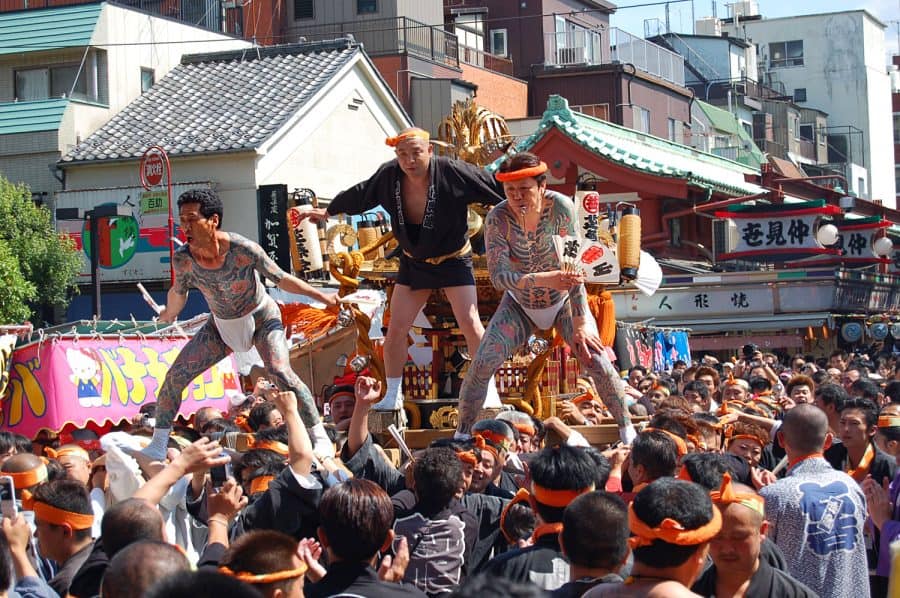
Leo U via Flickr CC By –NC 2.0
The following list of words are commonly used Japanese terms to describe aspects of tattooing, style or placement. They can be handy for your research when planning your design or refining an idea.
- Bokashi – Gradation (multi level shading of black through gray by clearly defining and diluting the ink). Most commonly used when depicting elements to fill around the central tattoo image.
- Donburi Sōshinbori – The Japanese full body tattoo without the chest opening
- Gakoubori – The single or combination of filler ‘pictures’ used to flesh out and frame the whole piece. Most common examples are waves, fire, wind, and clouds.
- Gobu – A half sleeve arm tattoo that starts at the shoulder and goes to just above the elbow join.
- Hikae – The chest panel tattoo, most often combines with an upper arm (Hikae Gobu) or full sleeve design (Hikai Nagasode). A deep hikae goes below the nipple of the chest, while a shallow hikae stays above the nipple
- Horishi – A tattoo artist. Hori is an honorific give to those who “carve.”
- Irezumi – Irezumi is the Japanese word for tattoo. While referring to the distinctive poking style of Japanese tattooing, it is also used as a blanket term to describe tattoo styles originating in Japan.
- Keshoubori – Secondary tattoo motif supporting the central idea, often flowers or plants
- Munewari – Traditional chest tattoo with the opening strip of un-tattooed flesh running down the middle
- Munewari Sōshinbori – A full body tattoo with the opening on the chest left un-inked
- Nagasode – A full sleeve arm tattoo done to the wrist or right up to the hand
- Nukibori – The negative space – untattooed section of the main image or tattoo background
- Sanja Matsuri – Japanese Festival famous for being the one event/day of the year where Yakuza are allowed to openly display their Irezumi. Yakuza tattoo is rarely visible tattoo
- Senaka – The Japanese back tattoo. Usually refers to the full back piece but also incorporates smaller designs. Those that also cover the buttocks and thighs are called Kame No Kou (the Tortoise Shell)
- Shichibu – The three quarter sleeve tattoo running from shoulder to the mid forearm
- Shudai – The central theme or idea of the tattoo
- Sujibori – The outline of a tattoo
- Sumi – Tattoo Ink
- Tebori – The literal translation of tebori is “to carve by hand”. Tebori describes the umbrella of traditional Japanese techniques most often used before the incorporation of tattoo machines.
- Yo/Yobori – The term for Western style tattooing which uses the machine. Yo is the commonly used slang term.
How much does a color Japanese sleeve cost?
A full color Japanese Irezumi sleeve tattoo is at the top of the pricing spectrum. A Japanese sleeve will cost at least $1500 -2000 USD, even at a comparatively cheap average price of $150 per hour. Experienced artists and Japanese tattooing specialists will charge more, while a sleeve from a Japanese tattoo artist master like Horiyoshi III could cost upwards of $10,000 USD for a colorful nagasode arm piece at a Tokyo or Osaka tattoo studio.














